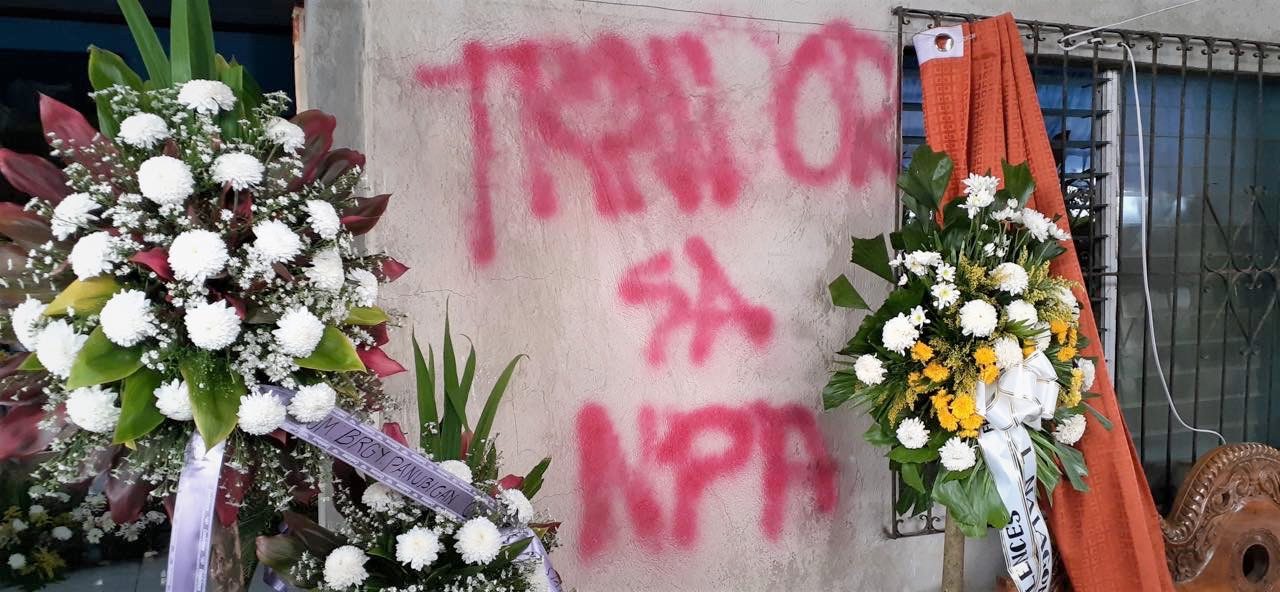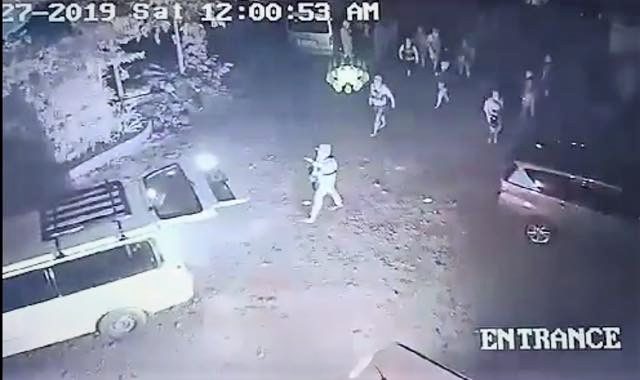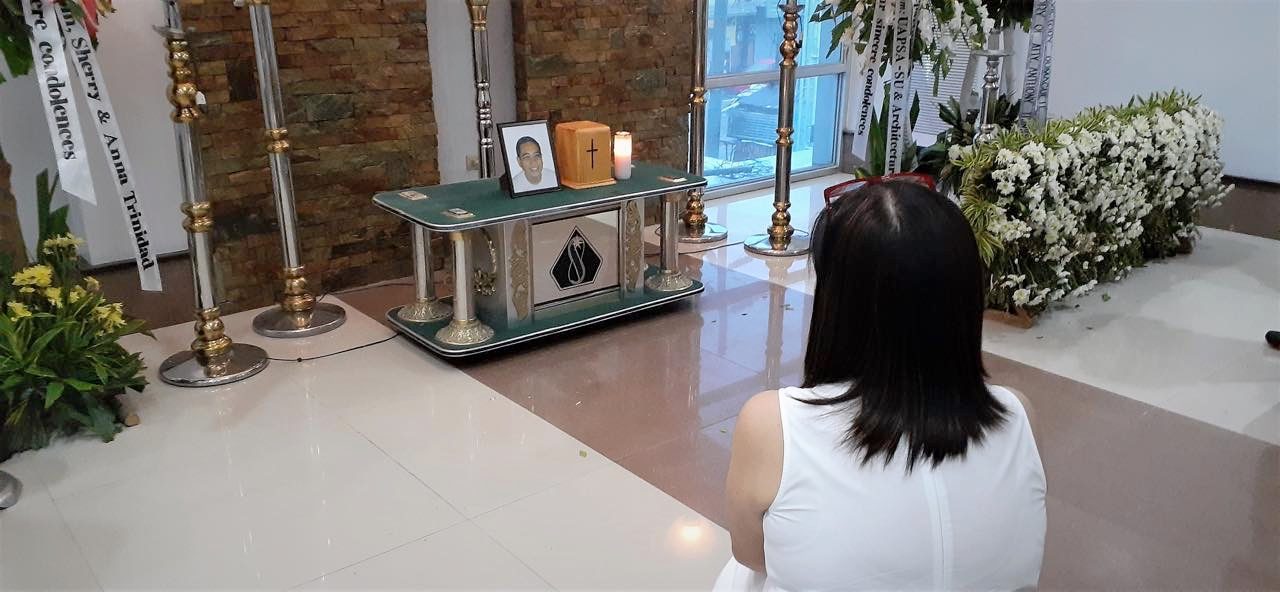SUMMARY
This is AI generated summarization, which may have errors. For context, always refer to the full article.

NEGROS ORIENTAL, Philippines – Just before midnight of July 27, policemen had just finished patrolling in Canlaon City’s major streets and were about to settle in for the night at the police station.
It was quiet in the city of plains and rolling hills, home to the highest peak in the region, Mount Kanlaon, which straddles the Negros provinces. Most of the residents were already in their homes as the local government had implemented a curfew, 9 pm for the minors and 10 pm for the adults.
Lieutenant Colonel Joeson Parallag, Canlaon City Police Station chief, said residents don’t step out of their homes during the curfew, except for some who make quick trips at the newly-opened, 24-hour convenience store near the public market.
It was already past midnight when the police received a call from the wife of Councilor Ramon Jalandoni that armed men had forcibly entered their home at Barangay Panubigan and shot her husband dead.
Six minutes later, before the police could head out to the scene, another shooting incident was reported in the residence of the Barangay Panubigan chief, which was more than 500 meters away from the councilor’s home.
The daughter of Barangay Captain Ernesto Posadas, also a farmer, alerted the police that several armed men stormed into their residence and shot her father dead.
Both victims were rushed to the Canlaon City District Hospital, but they didn’t make it. The attackers fled on getaway vehicles, leaving the cops behind.
Jalandoni and Posadas were among the 21 people killed in this province in 10 days, from July 18 to 28. Some of the victims were policemen, a lawyer, principal, and a one-year-old boy.
Parallag said they have no intelligence reports about the sightings of armed men in Canlaon, even with the curfew and police checkpoints in the city. They, too, were shocked, he said, adding it’s possible that armed suspects were monitoring their movement.
The police chief admitted they’re having difficulty in their investigation as no witnesses in both cases have come forward. He said they continue to appeal to witnesses to help them.
Police probers have yet to establish the motive of the killings, but based on what they’ve seen, they said they could be perpetrated by the New People’s Army (NPA) – a claim repeatedly denied by the rebel group.
Police evidence include the markings allegedly left by the perpetrators at the residences of the two victims – the suspects spray-painted “Traidor sa NPA (Traitor to NPA)” and “Mabuhay ang NPA (Long live the NPA)” on the walls, fences, and vehicles of the victims.
“We want to be fair with our investigation and look at all the angles. But based on the evidence, it points to the NPA. But we’re not concluding,” Parallag stressed.
The police officer added they haven’t determined if the same group targeted the two victims, who both enjoy good standing in the community. Jalandoni and Posadas were described by their kin as very kind, with a penchant for helping others. They had no enemies. (READ: TIMELINE: Killings in Negros)
State-sponsored?
The national government has denied that it’s to blame for the spate of killings, but the church and cause-oriented groups think otherwise. (READ: Death comes unprovoked upon Negros Island)
After all, the killings intensified after the Armed Forces of the Philippines and the Philippine National Police launched an armed campaign in the Negros provinces that targetted communist rebels, criminals, and those involved in illegal drugs.
“Oplan Sauron,” which rolled out in December 2018, was a response of state forces to President Rodrigo Duterte’s Memorandum Order No. 32, signed on November 22, 2018. The order aimed to “suppress lawless violence” in the provinces in Negros, Samar, and Bicol “in order to prevent further loss of innocent lives.”
It marked the start of the spiral of violence in the Negros provinces.
The cities of Canlaon and Guihulngan, both located in the northern part of Negros Oriental, were particularly targetted for being “highly-affected” and “influenced” by communist rebels.
But even the police acknowledge that the murders could not be attributed to one sector.
Brigadier General Debold Sinas, police chief of the Central Visayas based in nearby Cebu City, said the motives behind the July killings are different – they involve either a personal and political grudge, something related to their profession or business, or a land dispute.
He stressed that investigations are still ongoing, adding they couldn’t pin all the killings on the NPA. Sinas said he told police probers not to conclude their investigations immediately as they still have to probe into the subjects and their affiliations.
So far, investigations into the killings have found no links among the murders. But police have been saying that most of the victims in the recent wave of violence have been found to be sympathetic to the Left. Based on police reports, not all victims were farmers or were poor, as some came from prominent families and had good standing in their communities.
Of the 17 civilians killed, only 5 were confirmed to be perpetrated by the NPA, based on the testimonies of witnesses and the evidence gathered, the police said. These were the killings of the following: Barangay Buenavista chief Romeo Alipan in Guihulngan on July 25, a father and his one-year-old son in Sta Catalina town on the same day, a rebel returnee, and a leader of a farmer’s association in Zamboanguita town on July 24.
Alipan was known to be very active in the government’s anti-insurgency campaign. Police said murder charges against more than 20 NPA members have been filed for his killing.
For his part, former Bayan Muna party-list representative Neri Colmenares, who traces his roots to La Castellana town in neighboring Negros Occidental, said he has the impression that the victims’ families are fearing for their lives. “I can’t blame them because there’s no assurance from the government. That’s why there’s never-ending fear.”
He was in Negros Island on August 7 for the prayer rallies that called for an end to the killings and which demanded justice for the victims.
Colmenares asserted that the killings were state-sponsored based on the pattern of evidence established by human rights lawyers.

CCTV footage
Outside the residence of Councilor Jalandoni, a closed-circuit television camera recorded footage of more than 30 armed suspects aboard 5 vehicles – two vans, two service utility vehicles, and a pick-up truck – who arrived at the Jalandoni compound close to midnight on July 26.
The suspects’ faces were not covered, but they had hoods and caps. They were also wearing vests and carrying long firearms.
After the armed men alighted from their vehicles, they casually headed to the councilor’s house which was beside the warehouse where the CCTV cameras were placed. Some suspects remained at the parking space to serve as lookout.
One of the suspects also aimed the flashlight at the CCTV camera around 12:02 am, just as the armed men entered the house, to blur the footage. Two minutes later, the armed suspects came out of the house and ran to their vehicles. They left the premises at around 12:06 am.
How the armed men were able to penetrate the city during curfew and at a time when the police were supposed to be on red alert raises questions, Colmenares said.
The suspects who wore vests were highly-organized, he said, as the footage showed “firepower and superiority.” This only “cements our allegation that it was state-sponsored,” Colmenares said, pointing out the “brazenness” of the attack.
Many of the killings, he added, were committed in broad daylight, in public places, and even near police stations. “This shows that the perpetrators were never afraid of being accosted by the police.”
“President Rodrigo Duterte and his government publicly vilified the victims or their organization before they were killed, showing motive and threat,” he said.
When asked about the footage, Parallag said he had not yet seen the CCTV video. Nor has he seen the report of the Scene of the Crime Operatives. He said they are still closely monitoring the cases.
Left-leaning targets
Over at Guihulngan City, a neighboring locality of Canlaon, 4 persons – a lawyer, a principal, an educator, and a barangay captain – were shot dead in just 3 days.
Lieutenant Colonel Bonifacio Tecson, Guihulngan City Police Station chief, said investigations are still ongoing and that police probers are looking at all angles and evidence. He said, however, the mode of killing was “NPA style.”
He added that the area is a “mass base of the NPA” and added without elaborating, that the killings follow “the same style, the same pattern” of alleged NPA killings. In the past, NPAs did not use vehicles, however, and fled on foot after hitting their targets.
Local residents, according to Tecson, refuse to talk for fear of their lives, but he said he knows that rebels have hitmen in the area. “We also have witnesses who saw them,” he claimed.
On July 23, lawyer Anthony Trinidad of San Carlos, Negros Occidental was on board a sports utility vehicle with his wife and a client when unidentified assailants shot them at close range. His family refused to speculate whether his killing was related to the killing of his cousin, former Ayungon mayor Edsel Enardecido, which came 4 days after Trinidad’s ambush.

Tecson, meanwhile, said there are no persons of interest yet in the killing of Trinidad. While the gunman did not cover his face, there was no CCTV footage of the ambush.
He said they are eyeing motives related to Trinidad’s profession and background – Trinidad had handled controversial cases of progressive groups and his father was a staunch critic of the late dictator Ferdinand Marcos.
“His father and siblings are activists. You know activists, they are more sympathetic to the other side,” Tecson claimed. The elder Trinidad was a known martial law detainee in Guihulngan decades ago. His daughter is an incumbent councilor on her fourth term, while a son just completed two full 9-year terms.
“Our siblings won’t get elected if the people there don’t love us,” said Andrea Trinidad, Anthony’s sister.
Asked if Anthony was targeted by the government due to his alleged links to the Left, Tecson said he could have been killed by the NPA because he gave up their cases and passed them on to others.
Andrea Trinidad said her brother wasn’t a human rights lawyer, but confirmed that their father was an activist in the 1970s. “We’re now in 2019, what’s the connection? Our dad died a long time ago. Whatever my dad did, whatever his political leaning was, it has nothing to do with us,” she pointed out.
Their father is the lone connection to the Left. “Since we graduated and have our own professions, we’ve been living quiet lives,” Andrea said.
Other motives
Trinidad also happened to be the lawyer of the Bayawa siblings – one, the principal of Guihulngan Science High School, and the other, his sister, who was chief of the curriculum implementation division of the local education department. Arthur and Ardale Bayawa were shot dead inside their home while they were asleep on July 25, just two days after Trinidad was killed.
A relative of the Bayawas said he saw 5 to 7 armed men stealthily enter the house next door before 1 am. He heard the suspects, whose faces were covered with masks, break down his relatives’ front door. He also heard a vehicle speed away after the shooting.
The police arrived at the scene hours later at around 4 am.
They said the land dispute case appears to be the “most probable motive” for the Bayawa killings. This was disputed by both the Trinidad and Bayawa families who said Trinidad was not even a legal counsel of the Bayawas. The only thing that linked them was their being townmates.
Besides the land dispute, Tecson said they are also looking at alleged mismanagement of school funds as the motive for the killing of the principal and his sister.
What’s clear at this point is that the killings in Negros could be perpetrated by different groups with different motives. While the police say some of them were carried out by NPAs, other evidence also suggest they may not be the sole perpetrators.
Lawyer Maria Sol Taule of human rights group Karapatan had earlier been reported as saying that the killings in Negros that involved civilians, rights defenders, activists, and farmers are “all state-sponsored.”
These killings, she added, are “part of the intensified campaign against alleged supporters of the revolutionary movement” – a campaign emboldened by Duterte’s Memorandum Order No. 32.
Why Negros?
Colmenares said Negros Island has always seen extremes in poverty and wealth. This has triggered a “history of struggle,” he said.
“Long before activism became a popular term, there’s already activism in the people of Negros which called the attention of the government and the military, especially those intolerant of dissent. This is the reason why there are many killings,” he explained.
After the series of killings in Negros Oriental, the Diocese of Dumaguete called for a dialogue with stakeholders and government officials to air out their views about the violence, which has created a culture of fear in the community, especially in the hinterlands.
“We acknowledged poverty, lack of economic security and education, rising number of dysfunctional families, weak spiritual foundation, corruption, lack of social and basic services especially for the poor in the upland villages, lack of development opportunities for the marginalized are among the causes of the problems we’re confronted with today,” said the manifest after the dialogue.
The 4 Catholic bishops in Negros Island, meanwhile, had issued a collegial pastoral statement urging an end to the violence that has been gripping the province.
They also ordered all parishes to toll the church bells at 8 every evening, until the killings stop.
Bishop Patricio Buzon of the Diocese of Bacolod said they will release a pastoral letter addressed to the people of Negros. It would hopefully “help us understand what is going on” and provide a roadmap to help “navigate in this situation” and resolve it, he added.
Negros Oriental Governor Roel Dagamo had formed an anti-insurgency task force to boost the local government’s campaign against communist rebels and prevent more killings. The task force had recommended that the age-old problems of agrarian reform and poor access to roads and infrastructure support facilities be addressed.
Will anyone be listening this time? – Rappler.com
Add a comment
How does this make you feel?
There are no comments yet. Add your comment to start the conversation.